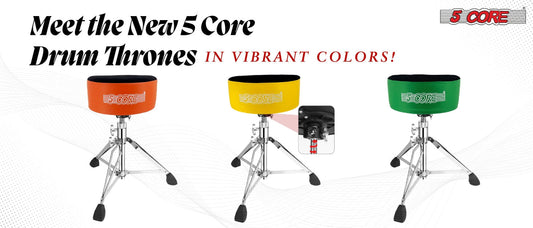What People Ask About Drum Microphones?
Drumming is the heartbeat of music, and capturing that energy and rhythm requires the right set of microphones. Whether you are a recording enthusiast or setting up for a live performance, choosing the right mics for your drum set is crucial. Let’s dive into the world of drum mics and explore what makes them essential for capturing the thunderous beats of a drum kit.
What mics are best for drums?
Drums are a complex set of instruments, each producing a unique sound that contributes to the overall rhythm. To capture this diversity effectively, a combination of different drum microphones is often used:
-
Dynamic Mics: These are versatile and robust, perfect for handling high sound pressure levels (SPL) from instruments like the kick drum and snare.
-
Condenser Mics: Known for their sensitivity and accuracy, condenser mics work well for capturing the nuances of cymbals and toms.
- Overhead Mics: These can be condenser or ribbon mics placed above the drum kit to capture the overall sound and stereo image.
Is 4 mics enough for drums?
The number of mics needed for a drum kit depends on various factors, including the kit size, desired sound, and recording environment. While four mics can cover essential elements like kick, snare, and overheads, more mics can provide additional detail and control over individual drum components.
What do you need to mic a drum set?
To effectively mic a drum set, you will need:
- Dynamic and Condenser Microphones: Tailored for Specific Drums.
- Microphone Stands and Clamps: For secure and adjustable positioning.
-
Cables and a mixer/interference: To connect and control the microphone signals.
How do you mic a 3 piece drum set?
With a smaller drum set like a 3-piece kit (kick, snare, and one tom), a basic setup might involve:
- A dynamic mic for the kick drum.
- Another dynamic or condenser mic for the snare drum.
- An overhead mic captures the overall sound.
How many mics does a drum set need?
The number of mics required varies based on the drum kit's size and the desired level of detail in the recording or amplification. A standard setup might involve 4–8 microphones for a full drum kit.
What is the purpose of a drum mic?
Drum mics accurately capture each drum component's unique sounds, allowing for clear and balanced mixing in recordings or live sound reinforcement.
How far should a drum be from a microphone?
The ideal distance between a drum and a microphone depends on the mic’s type, the drum’s sound characteristics, and the desired sound. Experimentation is key to finding the sweet spot for each mic placement.
What is the best position for drum mics?
-
Kick Drum: Inside the drum, near the beater, for a punchy sound.
-
Snare Drum: Positioned above or slightly off-center to capture both the snap and body.
-
Toms: Near the drumhead, angled towards the center for clarity.
- Overheads: Spaced evenly above the kit, capturing the stereo image.

Conclusion:
Choosing and placing drum mics is an art that blends technical know-how with an understanding of the drummer’s intent and the music’s style. Experimentation, coupled with an understanding of mic types and placement techniques, will help you achieve the perfect drum sound for your recordings or live performances.
Drum mics play a crucial role in shaping the rhythm and impact of music, allowing drummers’ beats to resonate with audiences around the world.




